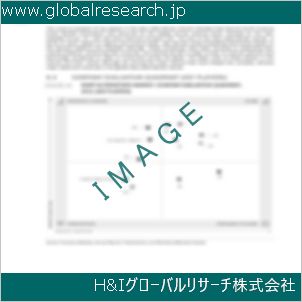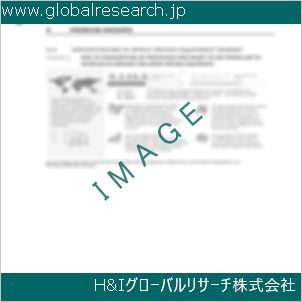Table of Contents
1 Industry Overview of Selenousacid
1.1 Definition and Specifications of Selenousacid
1.1.1 Definition of Selenousacid
1.1.2 Specifications of Selenousacid
1.2 Classification of Selenousacid
1.3 Applications of Selenousacid
1.3.1 Nuclear Application
1.3.2 Non-Nuclear Application
1.4 Industry Chain Structure of Selenousacid
1.5 Industry Overview and Major Regions Status of Selenousacid
1.5.1 Industry Overview of Selenousacid
1.5.2 Global Major Regions Status of Selenousacid
1.6 Industry Policy Analysis of Selenousacid
1.7 Industry News Analysis of Selenousacid
2 Manufacturing Cost Structure Analysis of Selenousacid
2.1 Raw Material Suppliers and Price Analysis of Selenousacid
2.2 Equipment Suppliers and Price Analysis of Selenousacid
2.3 Labor Cost Analysis of Selenousacid
2.4 Other Costs Analysis of Selenousacid
2.5 Manufacturing Cost Structure Analysis of Selenousacid
2.6 Manufacturing Process Analysis of Selenousacid
3 Technical Data and Manufacturing Plants Analysis of Selenousacid
3.1 Capacity and Commercial Production Date of Global Selenousacid Major Manufacturers in 2023
3.2 Manufacturing Plants Distribution of Global Selenousacid Major Manufacturers in 2023
3.3 R&D Status and Technology Source of Global Selenousacid Major Manufacturers in 2023
3.4 Raw Materials Sources Analysis of Global Selenousacid Major Manufacturers in 2023
4 Capacity, Production and Revenue Analysis of Selenousacid by Regions, Types and Manufacturers
4.1 Global Capacity, Production and Revenue of Selenousacid by Regions 2019-2024
4.2 Global and Major Regions Capacity, Production, Revenue and Growth Rate of Selenousacid 2019-2024
4.3 Global Capacity, Production and Revenue of Selenousacid by Types 2019-2024
4.4 Global Capacity, Production and Revenue of Selenousacid by Manufacturers 2019-2024
5 Price, Cost, Gross and Gross Margin Analysis of Selenousacid by Regions, Types and Manufacturers
5.1 Price, Cost, Gross and Gross Margin Analysis of Selenousacid by Regions 2019-2024
5.2 Price, Cost, Gross and Gross Margin Analysis of Selenousacid by Types 2019-2024
5.3 Price, Cost, Gross and Gross Margin Analysis of Selenousacid by Manufacturers 2019-2024
6 Consumption Volume, Consumption Value and Sale Price Analysis of Selenousacid by Regions, Types and Applications
6.1 Global Consumption Volume and Consumption Value of Selenousacid by Regions 2019-2024
6.2 Global and Major Regions Consumption Volume, Consumption Value and Growth Rate of Selenousacid 2019-2024
6.3 Global Consumption Volume and Consumption Value of Selenousacid by Types 2019-2024
6.4 Global Consumption Volume and Consumption Value of Selenousacid by Applications 2019-2024
6.5 Sale Price of Selenousacid by Regions 2019-2024
6.6 Sale Price of Selenousacid by Types 2019-2024
6.7 Sale Price of Selenousacid by Applications 2019-2024
6.8 Market Share Analysis of Selenousacid by Different Sale Price Levels
7 Supply, Import, Export and Consumption Analysis of Selenousacid
7.1 Supply, Consumption and Gap of Selenousacid 2019-2024
7.2 Global Capacity, Production, Price, Cost, Revenue, Supply, Import, Export and Consumption of Selenousacid 2019-2024
7.3 USA Capacity, Production, Price, Cost, Revenue, Supply, Import, Export and Consumption of Selenousacid 2019-2024
7.4 EU Capacity, Production, Price, Cost, Revenue, Supply, Import, Export and Consumption of Selenousacid 2019-2024
7.5 China Capacity, Production, Price, Cost, Revenue, Supply, Import, Export and Consumption of Selenousacid 2019-2024
7.6 Japan Capacity, Production, Price, Cost, Revenue, Supply, Import, Export and Consumption of Selenousacid 2019-2024
8 Major Manufacturers Analysis of Selenousacid
8.1 Manufacturer One
8.1.1 Company Profile
8.1.2 Product Picture and Specifications
8.1.2.1 Type I
8.1.2.2 Type II
8.1.2.3 Type III
8.1.3 Capacity, Production, Price, Cost, Gross and Revenue
8.1.4 Contact Information
8.2 Manufacturer Two
8.2.1 Company Profile
8.2.2 Product Picture and Specifications
8.2.2.1 Type I
8.2.2.2 Type II
8.2.2.3 Type III
8.2.3 Capacity, Production, Price, Cost, Gross and Revenue
8.2.4 Contact Information
8.3 Manufacturer Three
8.3.1 Company Profile
8.3.2 Product Picture and Specifications
8.3.2.1 Type I
8.3.2.2 Type II
8.3.2.3 Type III
8.3.3 Capacity, Production, Price, Cost, Gross and Revenue
8.3.4 Contact Information
8.4 Manufacturer Four
8.4.1 Company Profile
8.4.2 Product Picture and Specifications
8.4.2.1 Type I
8.4.2.2 Type II
8.4.2.3 Type III
8.4.3 Capacity, Production, Price, Cost, Gross and Revenue
8.4.4 Contact Information
8.5 Manufacturer Five
8.5.1 Company Profile
8.5.2 Product Picture and Specifications
8.5.2.1 Type I
8.5.2.2 Type II
8.5.2.3 Type III
8.5.3 Capacity, Production, Price, Cost, Gross and Revenue
8.5.4 Contact Information
…
9 Marketing Trader or Distributor Analysis of Selenousacid
9.1 Marketing Channels Status of Selenousacid
9.2 Traders or Distributors with Contact Information of Selenousacid by Regions
9.3 Ex-work Price, Channel Price and End Buyer Price Analysis of Selenousacid
9.4 Regional Import, Export and Trade Analysis of Selenousacid
10 Industry Chain Analysis of Selenousacid
10.1 Upstream Major Raw Materials Suppliers Analysis of Selenousacid
10.1.1 Major Raw Materials Suppliers with Contact Information Analysis of Selenousacid
10.1.2 Major Raw Materials Suppliers with Supply Volume Analysis of Selenousacid by Regions
10.2 Upstream Major Equipment Suppliers Analysis of Selenousacid
10.2.1 Major Equipment Suppliers with Contact Information Analysis of Selenousacid
10.2.2 Major Equipment Suppliers with Product Pictures Analysis of Selenousacid by Regions
10.3 Downstream Major Consumers Analysis of Selenousacid
10.3.1 Major Consumers with Contact Information Analysis of Selenousacid
10.3.2 Major Consumers with Consumption Volume Analysis of Selenousacid by Regions
10.4 Supply Chain Relationship Analysis of Selenousacid
11 Development Trend of Analysis of Selenousacid
11.1 Capacity, Production and Revenue Forecast of Selenousacid by Regions and Types
11.1.1 Global Capacity, Production and Revenue of Selenousacid by Regions 2024-2029
11.1.2 Global and Major Regions Capacity, Production, Revenue and Growth Rate of Selenousacid 2024-2029
11.1.3 Global Capacity, Production and Revenue of Selenousacid by Types 2024-2029
11.2 Consumption Volume and Consumption Value Forecast of Selenousacid by Regions, Types and Applications
11.2.1 Global Consumption Volume and Consumption Value of Selenousacid by Regions 2024-2029
11.2.2 Global and Major Regions Consumption Volume, Consumption Value and Growth Rate of Selenousacid 2024-2029
11.2.3 Global Consumption Volume and Consumption Value of Selenousacid by Types 2024-2029
11.2.4 Global Consumption Volume and Consumption Value of Selenousacid by Applications 2024-2029
11.3 Supply, Import, Export and Consumption Forecast of Selenousacid
11.3.1 Supply, Consumption and Gap of Selenousacid 2024-2029
11.3.2 Global Capacity, Production, Price, Cost, Revenue, Supply, Import, Export and Consumption of Selenousacid 2024-2029
11.3.3 USA Capacity, Production, Price, Cost, Revenue, Supply, Import, Export and Consumption of Selenousacid 2024-2029
11.3.4 EU Capacity, Production, Price, Cost, Revenue, Supply, Import, Export and Consumption of Selenousacid 2024-2029
11.3.5 China Capacity, Production, Price, Cost, Revenue, Supply, Import, Export and Consumption of Selenousacid 2024-2029
11.3.6 Japan Capacity, Production, Price, Cost, Revenue, Supply, Import, Export and Consumption of Selenousacid 2024-2029
12 New Project Investment Feasibility Analysis of Selenousacid
12.1 New Project SWOT Analysis of Selenousacid
12.2 New Project Investment Feasibility Analysis of Selenousacid
13 Conclusion of the Global Selenousacid (CAS 7783-00-8) Industry 2024 Market Research Report
| ※参考情報 亜セレン酸は化学式 H₂SeO₃ で表される無機化合物で、CAS番号は 7783-00-8 です。この物質は、セレンの酸化状態 +4 の形態であり、酸性の特性を持ちます。亜セレン酸は、特にその化学的性質や生理的作用から注目されています。 まず、亜セレン酸の基本的な特徴について説明します。亜セレン酸は、水に溶解しやすく、酸性を示すことから、さまざまな反応に利用されることが特徴です。また、亜セレン酸は揮発性が低く、加熱すると分解し、セレン酸およびセレンと水蒸気を生成します。 亜セレン酸の種類についても触れておくと、亜セレン酸そのもの以外にも、例えば亜セレン酸ナトリウム (Na₂SeO₃) のような塩類が存在します。これらの塩類も亜セレン酸の特性を保持しており、主に工業用途や研究の分野で使用されます。 亜セレン酸の用途は多方面にわたります。まず、工業的な用途としては、染料や顔料の製造において、亜セレン酸を原料として利用することがあります。また、亜セレン酸は、セレンを含む化合物の合成や反応の中間生成物としても機能します。農業分野においては、土壌改良や施肥としても利用され、セレンは植物にとって重要な微量元素であるため、適切な量を供給することが求められます。 さらに、亜セレン酸は生物学的な重要性も持っています。セレンは抗酸化作用を持ち、細胞を守る役割や免疫機能の向上に寄与することが知られています。そのため、亜セレン酸は健康補助食品や栄養剤の成分としても利用されており、一定の濃度で摂取することが健康に良いとされています。ただし、取り扱いには注意が必要で、過剰摂取は毒性を引き起こす可能性があるため、適切な管理が求められます。 また、亜セレン酸の関連技術について言及することも重要です。亜セレン酸は、分析化学の分野において、特定の金属や化合物の検出に使用される場合があります。例えば、亜セレン酸を用いた色素反応を利用することで、分析対象の濃度を測定することが可能です。この技術は環境监測や食品分析などに応用されており、より安全な環境の維持に寄与しています。 さらに、亜セレン酸は有機化学の合成方法にも使用され、その化学反応の触媒としての役割を果たすことがあります。これにより、新しい材料や医薬品の合成が進むこととなり、化学産業においても重要な位置を占めています。 以上のように、亜セレン酸はその化学的特性や生理的影響から、広範な分野で利用される重要な物質です。今後もその研究が進むことで、新たな用途や技術が開発されることが期待されています。安全に取り扱い、その特性や効果を最大限に活かすことが求められます。 |
❖ 免責事項 ❖
http://www.globalresearch.jp/disclaimer












